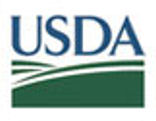
The recent USDA "re-survey" of corn and soybean growing areas in the Corn Belt where the 2009 harvest wasn't completely finished last fall was meant to get better estimates on the final totals for U.S. production in 2009. The results were released last week and didn't show as much yield loss as analysts had expected, in the crops that were standing in the snow over winter.
The next major USDA survey farmers should watch for is the 2010 Prospective Plantings Report, to be issue March 31.
USDA did the re-survey but they didn't re-survey two states, North Dakota and South Dakota in the re-survey update, because of so much snow. "What USDA ended up doing was adjusting 2009 corn production down by about 20 million bushels. That was a very small adjustment due to this resurvey of corn fields," says Chad Hart, Iowa State University Extension grain marketing economist.
Final numbers on 2009 crop, a look ahead to 2010
"We expect a little bit of an update when USDA resurveys the Dakotas," says Hart. "We'll probably get that update when the USDA Grain Stocks Report comes out at the end of March. Those will be two USDA reports worth watching. The Prospective Plantings Report and the Quarterly Grain Stocks Report will both be issued by USDA on March 31. They'll give us a snapshot look at the final numbers for last year's crop and the projected planted acreage for this coming 2010 crop."
Private market analysts and the grain trade are looking for the USDA report to show more corn will be planted in 2010 than was planted in the U.S. last year. "That's what we are hearing as well," says ISU's Hart. "USDA put out some projections last month—early numbers—at USDA's annual Ag Outlook Forum in Washington, D.C. They were looking at 89 million acres of corn and around 77 million acres of soybeans at that time."
Expect to see increase in total planted acreage
Was that surprising to Hart? "No," he says, "If anything, that estimate may be a little light on total planted acres. Especially given that we have about 6 million acres of wheat ground that didn't get planted last fall in the United States. Also, there are at least a couple million acres coming out of the Conservation Reserve Program. So the nation has some land opening up this year where corn and soybeans could be planted."
The projections USDA economists released at their Outlook Forum at the end of February came from computer models. The numbers that will be released in the 2010 Prospective Plantings Report on March 31 is survey data, based upon actual surveys of farmers and projecting the amount of acres farmers are intending to plant in 2010.
Questions farmers are asking about crop outlook
What questions is Hart getting as he talks to farmers today regarding crop marketing for 2010? "A lot of them are looking at prospects for exports," says Hart. "Farmers have a good feel for what's going on here in the U.S.; they see biofuel demand increasing and supporting corn prices. So they want to know what's going on internationally because the U.S. is still a major exporter of corn and soybeans on the word market."
Hart adds, "Another factor farmers ask me about is government policy, especially in terms of biofuels. For example, the debate in Congress on the biodiesel tax credit. How that is changing, or progressing. In this case, I tell them the biodiesel tax credit is moving through Congress now and I think it will likely get passed and put back into effect retroactively for 2010."
What about increasing ethanol blend to E15?
What about increasing the ethanol blend rate with gasoline to 15% or allowing E15 to be sold nationwide? "We are watching that issue too and the Environmental Protection Agency will have to make a ruling sometime this summer," says Hart. Does he think EPA will allow E15 as a transportation fuel? "My feeling is EPA is leaning toward the positive on that question," says Hart. "When EPA officials talk about this topic, the point out that their tests so far have shown no problems with moving to E15."
Some people say, regarding the biodiesel situation, maybe a better way than giving a tax credit would be to mandate or require biodiesel use to get it into the market. Then the government wouldn't need the tax credits to stimulate biodiesel production and use.
"Demand definitely has to come into play for biodiesel to be produced and to be viable in the marketplace," says Hart. "In a way, we already have a mandate. When you look at the federal Renewable Fuels Standard, it does contain specific provisions for biodiesel use. We are currently looking at about 650 million gallons of biodiesel to be produced in the U.S. in 2010. That would be more than the U.S. produced last year."
Pay attention to these market factors for 2010
What are some market factors to pay close attention to as farmers move closer to planting? Hart says, "For corn, we're not seeing a lot of export growth right now. On beans we're waiting to see how quickly the strong foreign demand for U.S. soybeans might erode. So far, the Chinese demand has held up strongly and we're seeing demand increase in other areas too, for soybeans."
The main thing Hart is watching is the weather. "What we've seen in the markets recently is they're reacting fairly quickly to the weather forecasts and the wet weather possibly delaying the start of planting this spring," he says. Iowa and other areas of the Corn Belt have had difficulties with wet weather and planting delays the past couple of years. "We are definitely starting out with plenty of moisture this spring, going into the 2010 cropping season," notes Hart. "That's a good thing!"
About the Author(s)
You May Also Like




